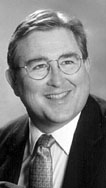When there was much discussion of hydroelectric power over the country in the 1900’s, Gadsden was talking about the Coosa River as a potential asset in that direction, but there were other plans before the public.
In this area there was much talk of harnessing Noccalula Falls for power, first by the old water wheel method and later by precluding current by the high-head and flume method.
In 1909, the owner of the falls property, J.M. Baker of Selma, came here and proposed to build a plant that would produce electricity and also furnish a water supply for Gadsden, Alabama City and Attalla. He said he had organized the Noccalula Light & Power Company with a capital of $100,000, and that associated with him were Selma businessmen Joseph B. Evans, Albert Parrish and Joseph P. Parrish.
Baker had given a deed to the falls and a wide strip of land down the gorge below the cataract to Alabama City and other easements and rights in payment for 94 of the 100 shares in the company, his associates holding one share each.
The charter asked for the right to build dams, reservoirs, wire lines, water mains and the like to carry on the business as he outlined it. Baker asked for the right of supplying electricity for lights, heat and power in the three towns, in addition to operating railway lines.
One of the big obstacles to the plan was the fact that Black Creek, which was to generate the power, very frequently had very little water in it, and in extreme dry periods almost went dry. It was proposed to solve that problem by building storage reservoirs above the falls. Some engineering was done along that line, but not very much.
In fact, there was never much done toward developing the proposed plant, although there were many people who claimed that was feasible enough. Baker and his associates were able to finance the plant, it was claimed, and they said that they were serious in the matter. They claimed they wanted to sell water and electricity to Gadsden and its neighboring towns
Noccalula Falls, or Black Creek Falls as it was called in the early days of the county, belonged to the Baker family in Selma and later to the Baker estate. The owners would not talk about selling the property until around 1926, when the late R.A. Mitchell stepped in and bought it for $50,000 with the announcement that he would hold it until the City of Gadsden felt able to buy it for a park.
In 1947, the city did buy the falls and the surrounding tract of 169 acres for a municipal park and plans for its improvement were under consideration. It is not likely that there will ever be another proposal to destroy its scenic beauty in order to produce power or to furnish water. The original owners of the Noccalula Falls tract bought by the city several years ago for a municipal park were Thomas McClung, Enoch Owen and Thomas Edwards.
On May 8, 1843, Mr. McClung entered his land and later was given a deed by the U.S. government. Owen entered his land on Oct. 11, 1849 and Mr. Edwards entered his tract on June 18, 1855.
In 1887 The Bakers leased the falls and a small surrounding acreage to the Gadsden Land & Improvement Company for 10 years. Organized to develop Gadsden, this company
bought outright a large acreage in the city and on Lookout Mountain, the part that was known as Bellevue Highlands.
The company built the beautiful Bellevue Hotel near where Paseur Park overlook now stands. The land company planned a street railway to the falls, which was later built by J. M. Elliott, Jr., along the south side of the gorge and along Black Creek from Alabama City. He also erected a large pavilion west of the highway to Reese City and near the gorge.
Louis Hart later built a pavilion on the east side of the highway. For years, the old pavilion was used for picnics, dances and various sorts of public gatherings. During the summer months, the society set held frequent dances and excursionists from all over the South.
The land company sponsored trips to the falls in its early days. The company had a brass band to play and it illuminated the amphitheater under the cataract with calcium lights. Steps were provided at an opening in the gorge opposite the falls, and many visitors were entertained under the overhanging rocks.
In the 1870s, the society people danced on a small pavilion under the horseshoe, a location so close to the falls that they were almost always enveloped in the mist. A chalybeate spring at the edge of the pavilion furnished water.
Originally there was a resort for summer residents near where the old pavilion stood. There was a street with houses on each side and one of the first factories in the county was located there. It was what the people called the “Hattery,” a shop where Allen Gaylor and his family manufactured the famous Galor hats, the kind that gave the backwoods man hereabouts the name “Wool Hat Boys.”
There also was a pretty stucco cottage with green blinds at the south entrance of the street that some called a hotel. Others referred to it as a boarding house. Some called it the House of Romance, for honeymooners used it, and some prominent people of this section were married there.
A virgin forest surrounded the area, and hundreds of native flowers bloomed among stately pine trees. The finest muscadines grapes in Alabama grew in the crevices of the rocks and on the trees. Down in the gorge there were ferns of various kinds, some of which were the most beautiful ever found in this section. Thoughtless persons destroyed many of the flowers, shrubs and muscadine vines.





